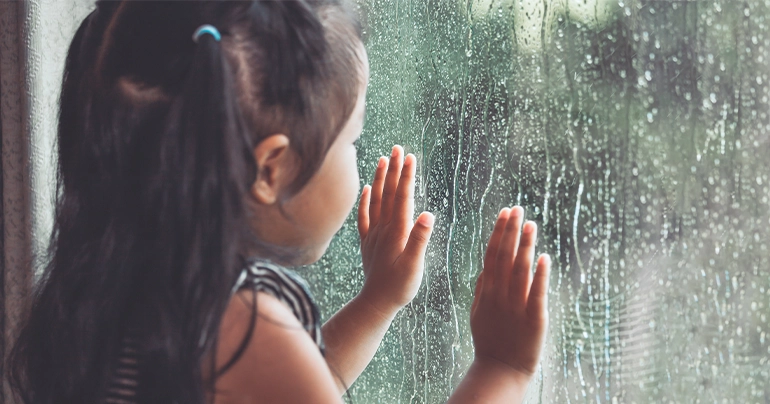The Reality of Global Warming: Breaking Down the Effects of Global Warming on Weather Changes and More
4 minute read
With the world changing around us, it’s becoming more evident that the effects of global warming are making it harder to find moments when we don’t have to be concerned about the air we breathe.
There’s no more “I’ll start once allergy season is over” or “let’s just get through flu season.” Global air quality events, weather changes, and more are beginning to overlap, and with concerns about our own health and the health of our families remaining at the forefront of our minds, it’s important to understand the true reality of global warming, how it impacts Indoor Air Quality, and what we can do in our own homes to make sure it’s always Healthy Air season.
The Reality of Global Warming
What do allergy season, hurricane season, flu season, wildfire season, and other air quality events have in common? Their increased frequency and duration are due to the effects of global warming. But how exactly do each of these seasonal events affect the air we breathe?
We did a deep dive to find out how the effects of global warming are leading to weather changes, increased rainfall, more allergies, and the like.
Allergy Season Is Every Season
Seasonal allergies already affect people’s health across the country regularly. The effects of global warming promote dangerous weather changes, and with the increase in warmer temperatures comes an increase in pollen.
More pollen, more seasonal allergy suffering. In fact, research from the University of Utah School of Biological Sciences shows that “pollen seasons start 20 days earlier, are 10 days longer, and feature 21% more pollen than in 1990.”
Muggy Season Lasts Longer
With things like airborne mold contributing significantly to health outcomes like asthma, the muggy season is never an enjoyable time, and the effects of global warming are making it linger longer. Weather changes, like increased summer temperatures, bring about higher humidity levels and, you guessed it, an increased chance of mold exposure in your home.
More Hurricanes No Matter the Season
Most people might not consider hurricane season part of their air quality problems, but the amount of rainfall that occurs during a hurricane certainly is. With weather changes and more of the effects of global warming contributing, hurricane season starts earlier and earlier, so it’s important to be prepared to handle the excess moisture.
Blazing Wildfire Seasons
Another air quality event that isn’t as frequently thought about outside of the West Coast is wildfire season, but that doesn’t mean it has any less effect on your IAQ.
In fact, researchers found that, in the western United States, the effects of global warming can alter the timing of snowmelt, vapor pressure, spring rains, and more weather changes that threaten a longer wildfire season. This leads to an increase in smoke and smog in the air we breathe, and the effects are being felt nationwide.
Flu Fighting Year-Round
Viruses like the flu aren’t going away anytime soon, and while the typical response is to wait for flu season to get your flu shot, that just isn’t going to cut it anymore. The rapid weather changes and the effects of global warming have increased the risk of catching the flu. Eliminating viruses from the air you breathe at home has become even more important.
Weather Changes and the Effects of Global Warming
When it comes to the air you breathe at home, it isn’t just weather changes that lead to air quality events like seasonal allergies that you need to worry about.
Environmental impacts, like radon gas and increased home renovations, are equally to blame for poor Indoor Air Quality conditions. With these seasonal homeowner tasks to consider (like annual radon testing), there’s no denying it—the need for Healthy Air has become more persistent and pervasive than ever before as our weather changes.
There’s a large time of year when the focus of many homeowners is renovating their homes. This not only increases the value of your home but also kicks up dust, VOCs, and allergens in the process, causing sniffling, itchy eyes, and more. So, when the weather changes and the effects of global warming force you inside—where poor Indoor Air Quality is making you ill—filling your home with Healthy Air is one of the best ways to combat these effects while your home is under construction.
What many homeowners may not know is that there are year-round concerns that aren’t talked about nearly as much as they should be. Radon is often forgotten about but is a naturally occurring, radioactive gas that can lead to devastating health problems if left unchecked. Despite this reality of global warming, AprilAire makes it easy to not only test your home for radon but also mitigate it as well if it’s found in your home.
It’s Always Healthy Air Season
So, what’s the correlation between these overlapping seasonal air quality events and the environmental impacts from renovations and a lack of radon control? These events are causing poor Indoor Air Quality in your home and leading to negative impacts on your health—and the effects of global warming aren’t doing us any favors.
Luckily, there’s an answer to these issues! AprilAire offers Healthy Air solutions to combat the effects these events can have on your home and health. With help from Healthy Air solutions, like the AprilAire Healthy Air System®, you can fill your home with Healthy Air and not only improve your Indoor Air Quality but also reap the benefits of this award-winning system:
- Better sleep
- Reduced illness
- Alleviate allergies
- Increased home value
- Better energy efficiency
The reality of global warming is: There are plenty of times and events that are out of your control, but when life won’t give you a breather—AprilAire can. Because if the world is changing, shouldn’t your home change with it? If you’re looking for more information on AprilAire and our Healthy Air solutions, contact your local Healthy Air Professional to bring Healthy Air right into your home.



